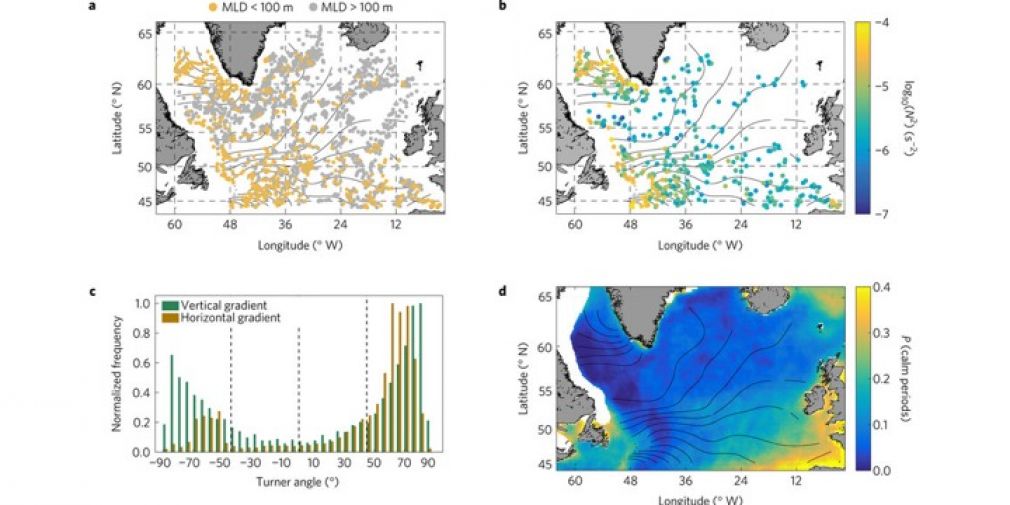ACTUALITES
Unexpected winter phytoplankton blooms in the North Atlantic subpolar gyre : a Nature Geoscience paper
- Lectures : 8747
- Notifications
- Imprimer
- Partager

In mid- and high-latitude oceans, winter surface cooling and strong winds drive turbulent mixing that carries phytoplankton to depths of several hundred metres, well below the sunlit layer. This downward mixing, in combination with low solar radiation, drastically limits phytoplankton growth during the winter, especially that of the diatoms and other species that are involved in seeding the spring bloom. Here we present observational evidence for widespread winter phytoplankton blooms in a large part of the North Atlantic subpolar gyre from autonomous profiling floats equipped with biogeochemical sensors. These blooms were triggered by intermittent restratification of the mixed layer when mixed-layer eddies led to a horizontal transport of lighter water over denser layers. Combining a bio-optical index with complementary chemotaxonomic and modelling approaches, we show that these restratification events increase phytoplankton residence time in the sunlight zone, resulting in greater light interception and the emergence of winter blooms. Restratification also caused a phytoplankton community shift from pico- and nanophytoplankton to phototrophic diatoms. We conclude that transient winter blooms can maintain active diatom populations throughout the winter months, directly seeding the spring bloom and potentially making a significant contribution to over-winter carbon export.
Authors : L. Lacour, M. Ardyna, K. F. Stec, H. Claustre, L. Prieur, A. Poteau, M. Ribera D'Alcala & D. Iudicone
Nature Geoscience (2017) doi:10.1038/ngeo3035
Modifié le
SUIVEZ NOTRE FIL TWITTER
L'OBSERVATOIRE
L'OBSERVATION
- Variables
- Stations d'observation
- Plateformes
- Services d'observation
- Organigramme
- Données d'observation
RESSOURCES
